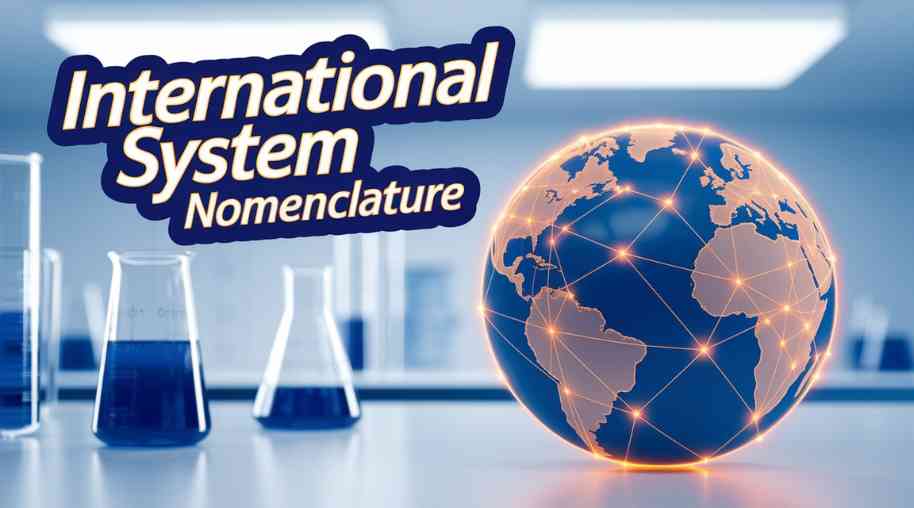ISN Full Form-International System of Nomenclature
by Shashi Gaherwar
0 1991
International System of Nomenclature: Standardizing Scientific and Global Classifications
Introduction
The International System of Nomenclature is a globally recognized framework used to assign standardized names to various entities, including biological species, chemicals, and astronomical objects. This system ensures consistency, accuracy, and universal understanding across different scientific and professional fields.

By adhering to a well-defined set of rules, the International System of Nomenclature eliminates confusion and promotes effective communication among researchers, scholars, and industry professionals. In this article, we explore the key principles, types, and significance of international nomenclature systems in different domains.
What is the International System of Nomenclature?
The International System of Nomenclature refers to a set of globally accepted naming conventions used to classify and identify various entities in different fields of study. The primary objective is to ensure uniformity in naming, avoiding redundancy and ambiguity in scientific and professional communication.
The nomenclature system is governed by specific international organizations that establish rules and standards for assigning names to different entities, such as species, chemical compounds, genes, and astronomical bodies.
Types of International Nomenclature Systems
Several fields utilize international nomenclature systems to classify and name their respective entities. Below are some of the most well-known nomenclature systems:
- Biological Nomenclature (Binomial Nomenclature): Governed by the International Code of Nomenclature for algae, fungi, and plants (ICN), International Code of Zoological Nomenclature (ICZN), and International Committee on Systematics of Prokaryotes (ICSP). Uses a two-part Latin name (Genus + Species). Example: Homo sapiens (humans), Felis catus (domestic cat). Ensures a unique and universally accepted name for each species.
- Chemical Nomenclature (IUPAC System): Governed by the International Union of Pure and Applied Chemistry (IUPAC). Assigns systematic names to chemical compounds. Example: Dihydrogen monoxide (H₂O), Sodium chloride (NaCl). Prevents confusion and allows precise chemical identification.
- Genetic Nomenclature: Governed by the Human Genome Organization (HUGO) and Gene Ontology Consortium. Names genes, proteins, and genetic sequences. Example: BRCA1 (Breast Cancer Gene 1), TP53 (Tumor Protein P53). Ensures clarity in genetic research.
- Astronomical Nomenclature: Governed by the International Astronomical Union (IAU). Names planets, stars, galaxies, and celestial bodies. Example: Alpha Centauri, NGC 1300, 1P/Halley (Halley's Comet). Enables efficient cataloging of celestial bodies.
- Pharmaceutical Nomenclature (INN System): Governed by the World Health Organization (WHO). Standardizes naming of pharmaceutical drugs. Example: Paracetamol (INN), Acetaminophen (USAN). Prevents confusion and ensures global drug recognition.
- Mathematical and Computing Nomenclature: Governed by various standard organizations. Assigns names to mathematical theorems, programming languages, and algorithms. Example: Euler’s Number (e), Pythagorean Theorem, SHA-256 (cryptographic algorithm). Maintains consistency in technological advancements.
Why is the International System of Nomenclature Important?
- Standardization and Uniformity: Prevents duplication and ensures each entity has a unique, universally recognized name.
- Improves Scientific Communication: Enables researchers and professionals worldwide to use the same terminology without confusion.
- Supports Regulatory Compliance: Ensures adherence to standardized nomenclature in industries like pharmaceuticals and genetics.
- Enhances Data Organization and Retrieval: Facilitates efficient data classification for storage and retrieval in scientific databases.
- Promotes Cross-Disciplinary Research: Encourages collaboration across fields with consistent terminology.
Challenges in Implementing International Nomenclature
- Complexity and Rigid Rules: Some systems have strict conventions requiring extensive expertise.
- Language Barriers: Regional variations in pronunciation and interpretation of Latin or English names can cause discrepancies.
- Frequent Revisions and Updates: Scientific advancements necessitate changes, challenging users to stay updated with new classifications.
- Multiple Naming Systems for the Same Entity: Entities like chemicals and pharmaceuticals may have multiple names based on region or application.
Future of International Nomenclature Systems
The future of nomenclature is likely to be shaped by technological advancements such as artificial intelligence (AI), blockchain, and big data analytics. These technologies can automate classification processes, detect inconsistencies, and improve the accuracy of naming systems.
Additionally, greater international collaboration and digital databases will enhance the accessibility and integration of standardized nomenclature across scientific and industrial domains.
The International System of Nomenclature is an essential framework that provides standardization, clarity, and efficiency in naming various scientific and industrial entities. From biological species to pharmaceutical drugs and astronomical bodies, a well-defined nomenclature system ensures names are universally recognized and correctly classified.
Further Learning Resources
If you’re passionate about building a successful blogging website, check out this helpful guide at Coding Tag – How to Start a Successful Blog. It offers practical steps and expert tips to kickstart your blogging journey!
For dedicated UPSC exam preparation, we highly recommend visiting www.iasmania.com. It offers well-structured resources, current affairs, and subject-wise notes tailored specifically for aspirants. Start your journey today!

Share:








Comments
Waiting for your comments